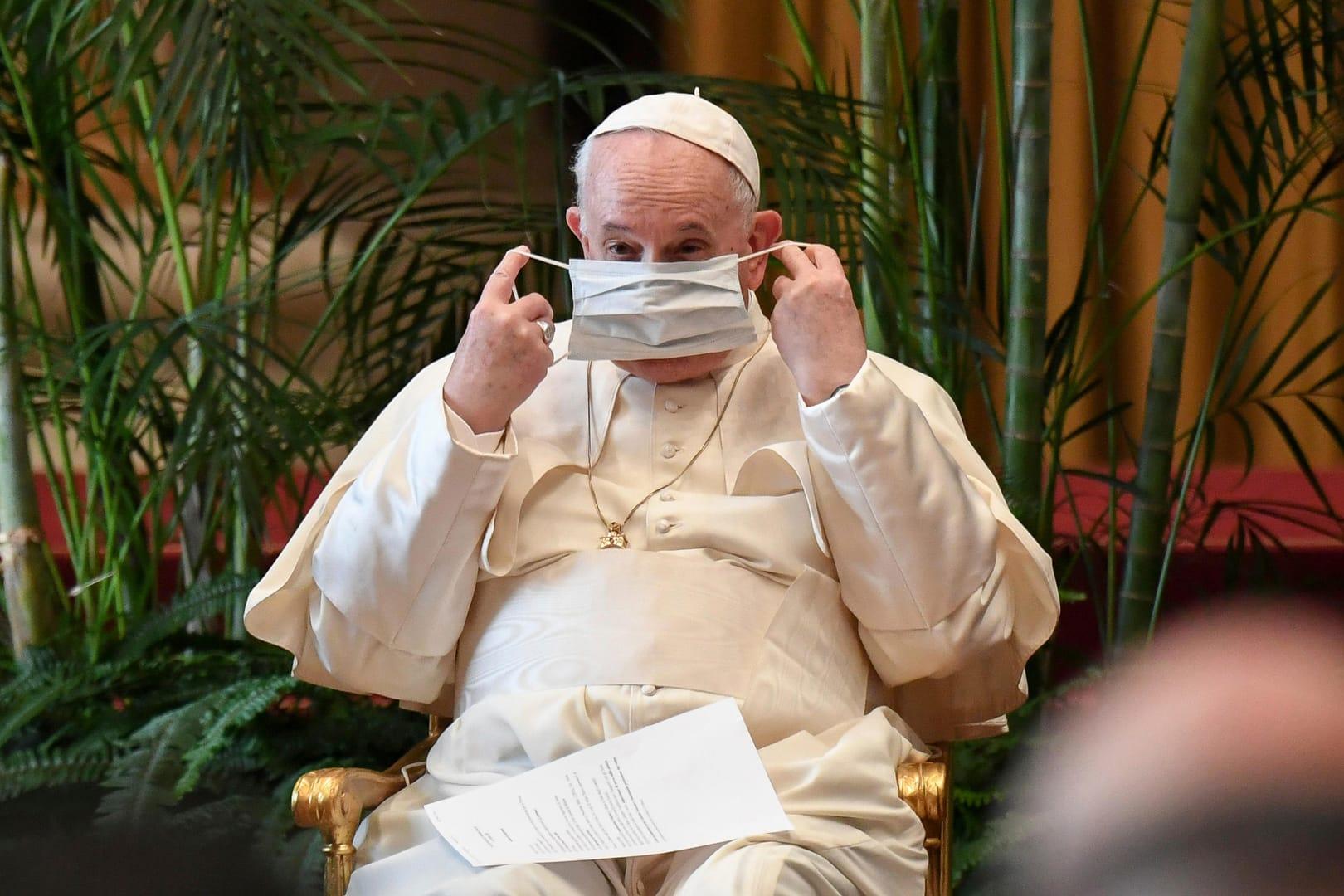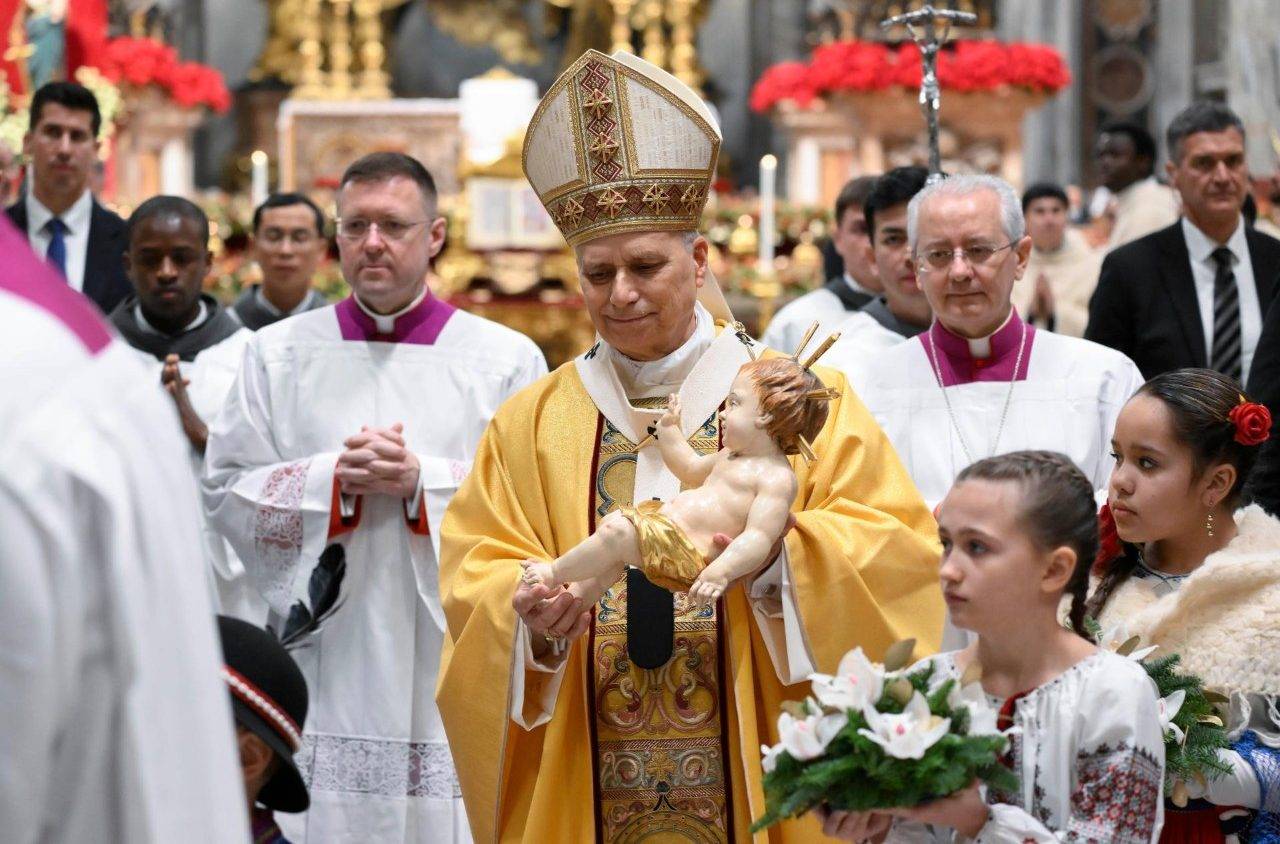[Editors note: This is part one of Crux Rome Bureau Chief Inés San Martín’s look back at 2021.]
ROSARIO, Argentina – Though technically different calendar years, history might be tempted to lump 2020 and 2021 together, since many of the challenges that began early last year are still ongoing, particularly when it comes to the COVID-19 pandemic. The “novel” coronavirus was still front and center during most of 2021.
Papal traveling
All three of Pope Francis trips abroad in 2021 were marked by the pandemic, but few as much as the one to Iraq in March. A historic first for many reasons – first papal trip ever to Iraq and the first trip outside of Italy Francis took since the the country first went into lockdown in March of 2020 – much of the hype surrounding it had more to do with the dangers of crowded events than with the actual reason for the trip: showing support to a Christian community victim of genocide in the hands of ISIS.
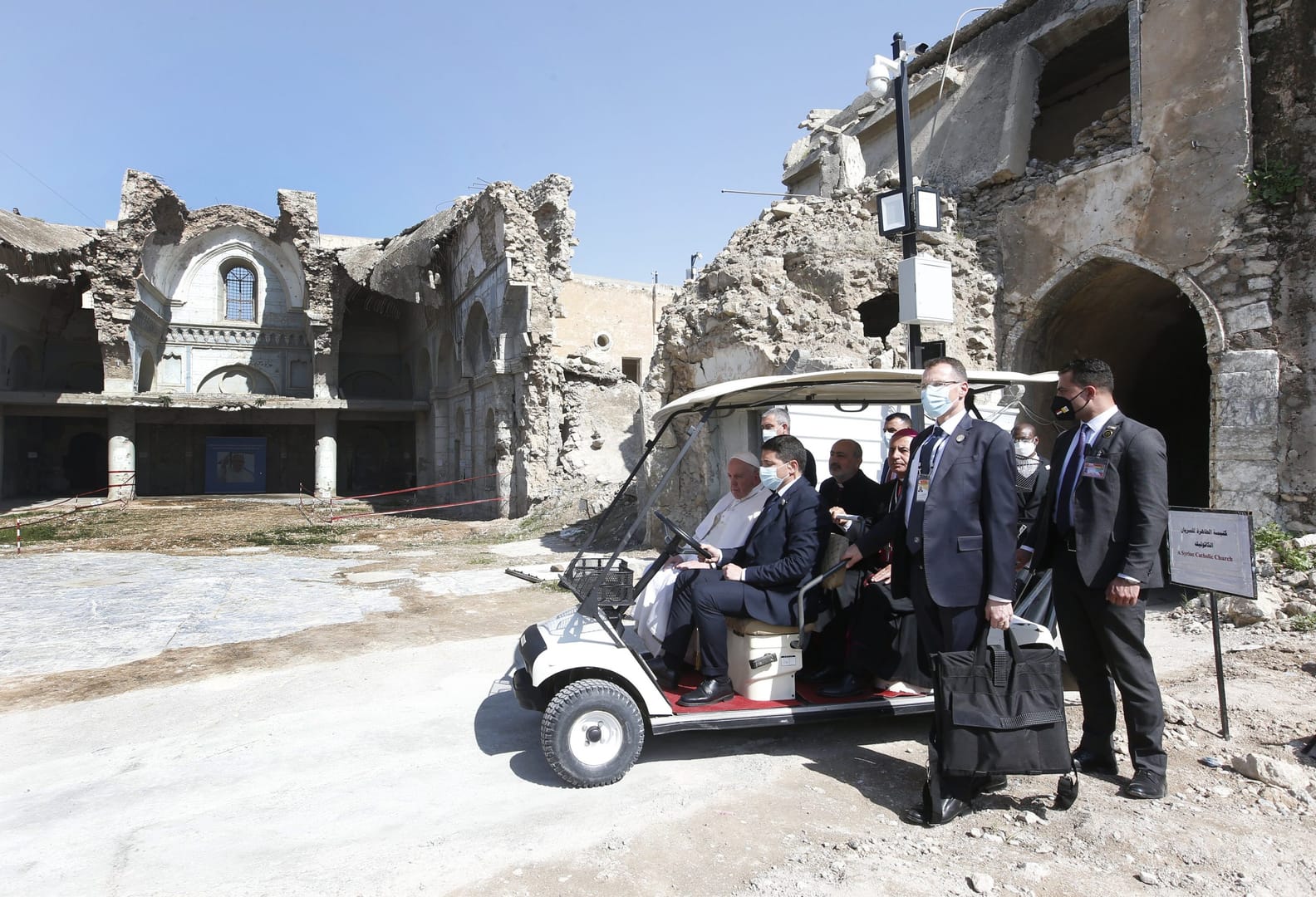
During the four-day trip to Iraq, Francis met with officials, religious leaders and ordinary Iraqis of all faiths. He went to Najaf where he visited Grand Ayatollah al-Sistani, the spiritual leader of Iraq’s Shia community, a milestone when it comes to interfaith dialogue. He also visited the ancient city of Ur, city of Abraham; Erbil, the capital of Iraq’s Kurdistan region; and Mosul, where he prayed at the ruins of four churches destroyed by the Islamic terrorist group.
The pope’s visit to Iraq offered moral support to Iraq’s beleaguered and dwindling Christian community. Yet its future does not depend on the papal visit, but the country’s leadership and the success of state-building in the country, which held elections in October.
Francis not only visited Iraq this year, but also welcomed the country’s leadership in the Vatican to further encourage them into protecting the many minorities living in the country. While much can be done to ensure the safety of minority communities, it has to be recognized that their plight has much to do with instability linked to Iraq’s century-long state formation process and persistent foreign interference.
For a man who said he had felt “caged” inside the Vatican ever since the onset of the pandemic, the trip to Iraq provided a much needed breather. However, while Francis and his entire entourage, including journalists, had been vaccinated, in early March Iraq was gripped by a second wave with a record of over 5,000 new cases a day, prompting authorities to impose full lockdowns during the visit.
Similarly, during his visits to Budapest and Slovakia in September, and then to Cyprus and Greece in December, the pandemic also restricted crowds and the movement of pilgrims.
Vaccines
The Vatican’s stance on the COVID-19 vaccine technically falls under 2020, since in Dec. of last year, as vaccination campaigns were still on the verge of being a reality, the Congregation for the Doctrine of the Faith released a statement offering a series of considerations. Focused on the vaccines against COVID-19 developed from cell lines derived from tissues obtained from two aborted fetuses, it concluded that when ethically irreproachable vaccines are not available, it is acceptable to receive those that have used the problematic cell lines in their research and production process.
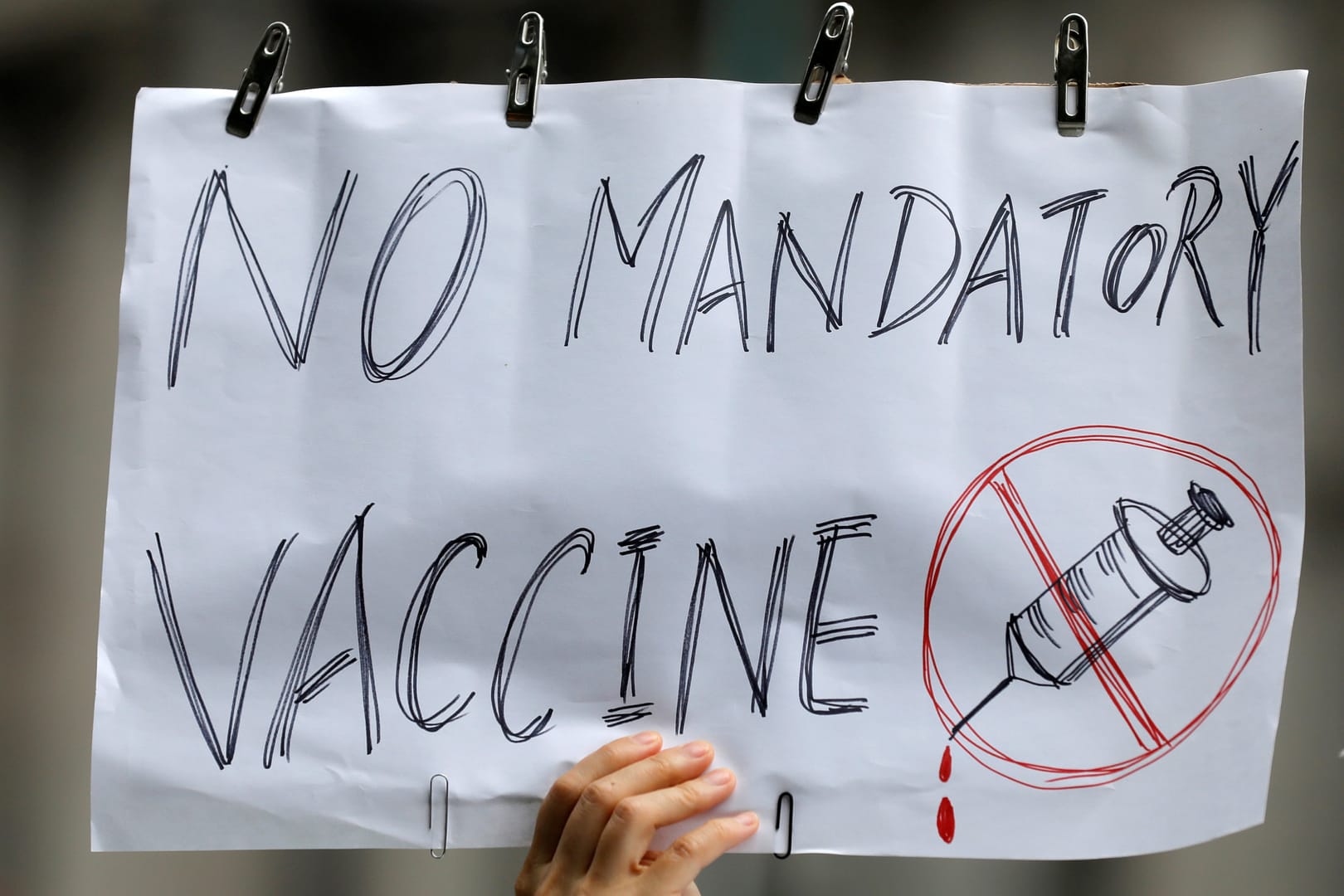
But it also stated that vaccination cannot be mandatory. However, since then, the Holy See has hardened its position, at least when its own employees, who must be vaccinated in order to continue working. Visitors have to show either a vaccination certificate or a negative COVID-19 test. Three members of the Swiss Guard had to quit after they refused to get vaccinated.
Francis has been a strong advocate for a just and equitable distribution of COVID-19 vaccines throughout the world, especially to those most in need, and has described vaccination “an act of love.”
Though some have reduced the pro-vaccine and the anti-vaxxer division to a liberal vs. conservative fight, there have been many prominent conservatives who have spoken up in favor, or who have led by example, including Pope emeritus Benedict XVI, who has received all three doses.
Furthermore, on Sept. 24, the leader of the traditionalist Society of St. Pius X surprised many by saying that getting vaccinated against the coronavirus “may sometimes be an eminently prudent act in the moral sense of the term,” while denouncing the promotion of coercive measures in favor of the vaccine as an “abuse of power.”
Lives lost
With a global death toll due to COVID-19 surpassing five million people, the Church was not immune. Setting aside the number of lay faithful, who are impossible to count, hundreds of religious, priests, bishops and cardinals lost their battle against the virus, while some were able to fight it off.
Among those who survive hospitalization are Nicaraguan Cardinal Leopoldo Brenes, and American Cardinal Raymond Burke, who was on a ventilator for over a week.
After a month long battle with COVID-19, Venezuelan Cardinal Jorge Urosa Savino, who led the Archdiocese of Caracas for 13 years, died at the age of 79, in September. Days later, Brazilian Cardinal Jose Freire Falcão, who led the Archdiocese of Brasilia for 20 years, died at the age of 95, nearly a week after he was diagnosed with COVID-19.
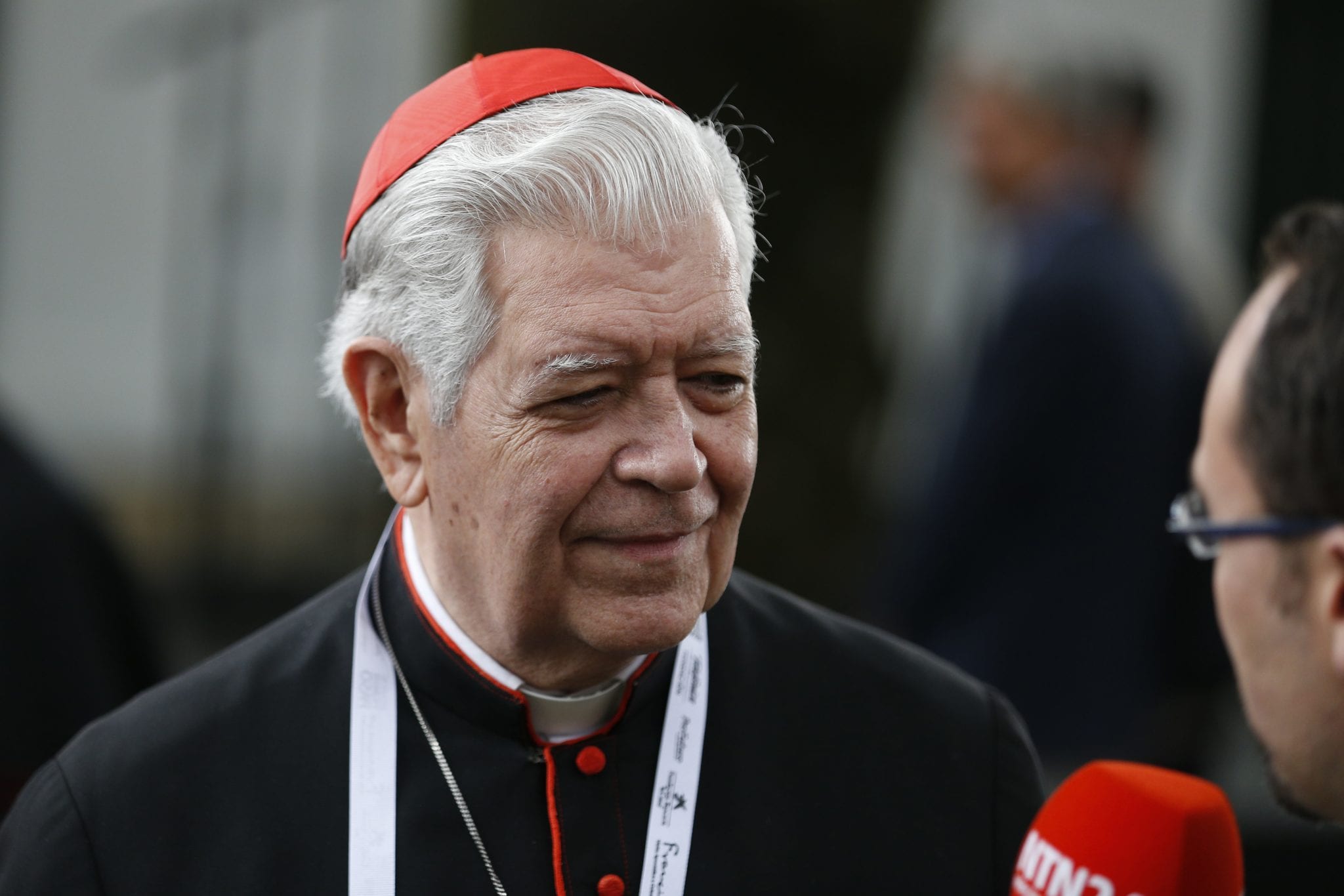
Archbishop Aldo Giordano, appointed earlier this year as papal representative to the European Union, died Dec. 2 in Leuven, Belgium, where he had been hospitalized for COVID-19.
A week in January was arguably the deadliest for the Catholic episcopacy, with ten bishops dying in the week of Jan. 8-14 after testing positive with the coronavirus.
In India, arguably the deadliest week for the clergy came in the summer, with at least 129 nuns and 117 priests dying after testing positive of COVID in the 33 days between 10 April and May 14, 2021. Jesuit Father Stan Swami, a human rights activist who had been imprisoned in 2020, died of COVID-19, after a week on a ventilator, in July.
In the United States, where more than 800,000 people have died from COVID-19, dozens of nuns who lived in congregate settings across the country, from upstate New York to Milwaukee and Detroit suburbs and beyond, lost their lives to the virus. Many of them were older retirees who dedicated their lives to teaching or nursing.
One order alone, the Felician Sisters, lost 21 nuns at four convents. Homes for elderly sisters were particularly hit worldwide, including in Brazil, where five nuns died in one week at a convent.
The list, though in no way comprehensive, serves to illustrate the impact the pandemic has had among the Catholic clergy. Italy was one of the worst hot spots early on in the pandemic, and through March of this year, 292 mostly older diocesan priests died of the virus.
Clerical sexual abuse
When it comes to addressing the clerical abuse crisis, there have been ups and downs this calendar year. On the one hand, many formation seminars were held online allowing thousands to participate, while preventing much of the networking that usually takes place during the coffee breaks.
On the other hand, several reports by independent commissions were released, including in Germany and in France. With an increased global awareness of the problem, now going well beyond English speaking countries, the bishops’ conferences of Portugal and Spain have promised their own independent investigation into cases of abuse.
When it comes to transparency, however, the scales remain uneven, since there are still many question left unanswered, including the true reasons behind the removal of many bishops from their positions and ongoing though seemingly stalled trials against others, including Bishop Gustavo Zanchetta, of Argentina, one of Pope Francis first episcopal appointments. Many prelates are being investigated for either abuse or cover-up, including at least a dozen in Mexico.
Arguably, the one exception to the rule on all-things-transparency on clerical sexual abuse this 2021 was Poland, where ten bishops got the boot, and the papal representative in the country publicly acknowledged the reasons why in each of the cases related to abuse. It is worth pointing out, however, that this transparency came after decades of cover up. Also worth highlighting is the stark contrast between Poland and what happened in Chile in 2018, when Francis accepted the resignation of a third of the bishops in the country, all of them suspected of mishandling the situation, but no explanations were given for their removal, prompting some of the prelates to claim they were outed because they had reached the mandatory resignation age.
Follow Inés San Martín on Twitter: @inesanma
